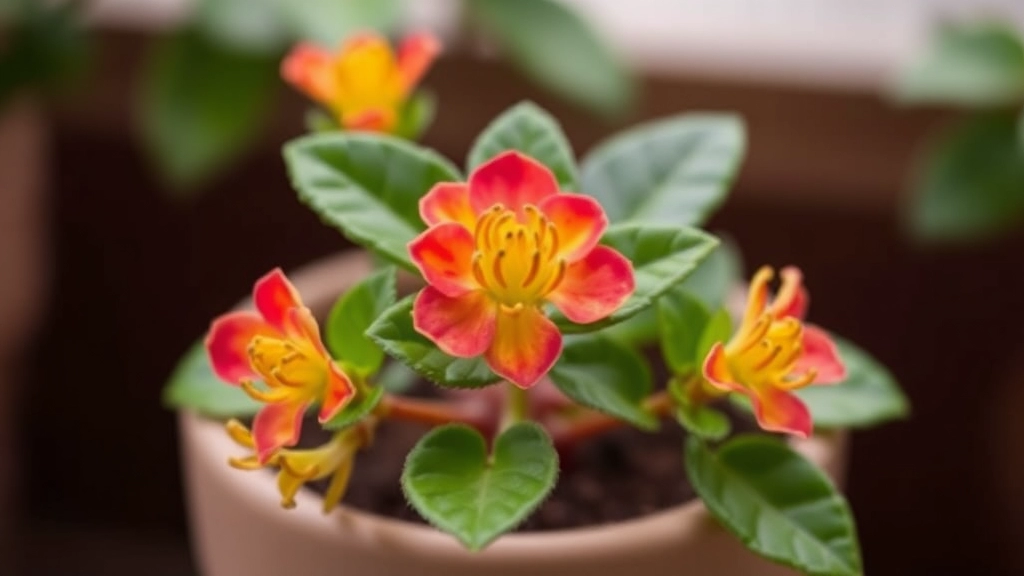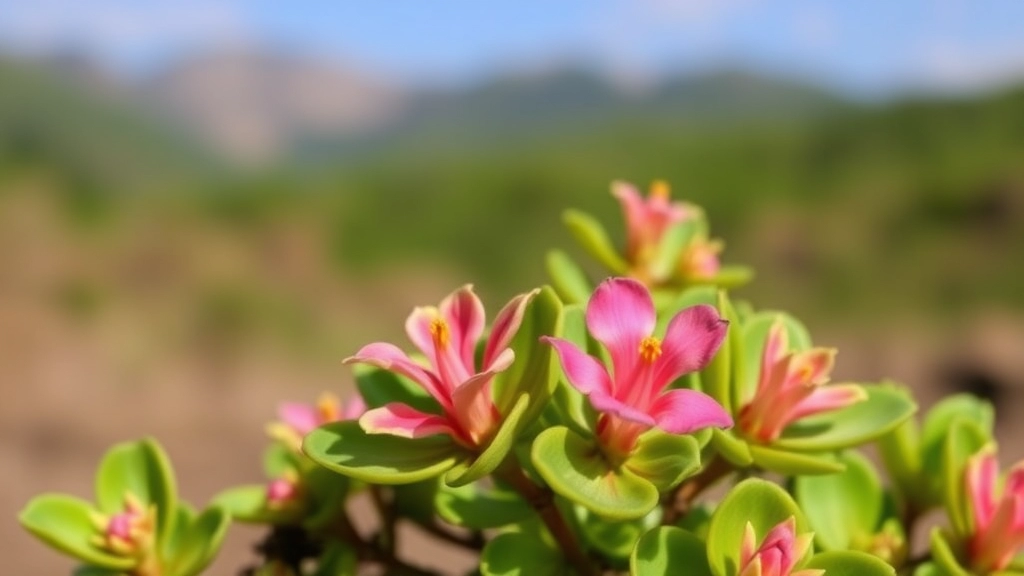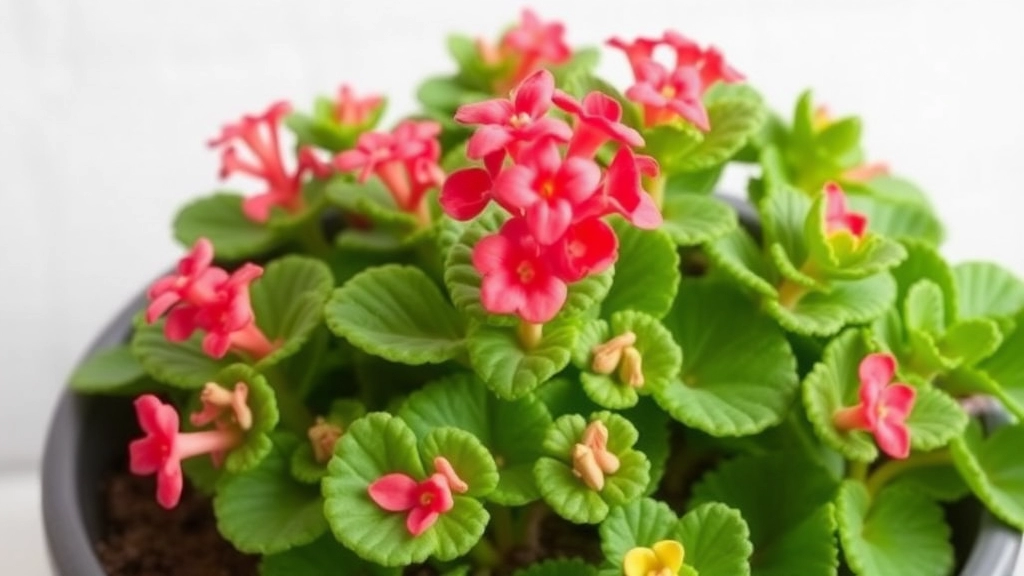Is Kalanchoe Poisonous to Humans?
Wondering if Kalanchoe is poisonous to humans? You’re not alone. Many people are concerned about the safety of having this popular plant around their homes, especially if they have kids or pets. Kalanchoe contains compounds like bufadienolides, which can be harmful if ingested in large quantities. While symptoms like nausea, vomiting, and diarrhea are common, severe cases could lead to heart arrhythmias. However, most incidents involving humans are not life-threatening.
Safety Precautions
To stay safe, it’s best to handle Kalanchoe with care. Wearing gloves can prevent skin irritation from the plant’s sap. If you have pets, be extra cautious, as Kalanchoe is significantly more toxic to animals. Always keep an eye out for any symptoms of poisoning and consult a medical professional if ingestion occurs.
Conclusion
Knowing the risks and taking proper precautions can help you enjoy your Kalanchoe plant without worry.
When considering houseplants, many people find themselves drawn to the vibrant and resilient Kalanchoe. But what makes these plants so appealing, and which varieties are the most popular?
Kalanchoe plants, native to Madagascar, are known for their fleshy leaves and stunning clusters of flowers. They are often chosen for their low maintenance requirements and ability to thrive in various indoor conditions.
### Popular Varieties of Kalanchoe
– **Kalanchoe blossfeldiana**
– Often referred to as the Flaming Katy, this variety is famous for its bright, colourful blooms.
– It is a popular choice for gifting and decorative arrangements. For more detailed care information, you can refer to the [complete care guide for Kalanchoe blossfeldiana](https://planthq.org/complete-care-guide-for-kalanchoe-blossfeldiana-succulent/).
– **Kalanchoe tomentosa**
– Known as the Panda Plant, it features fuzzy, silvery leaves with brown edges.
– Its unique appearance makes it a favourite among collectors. If you’re interested in learning more about its care, check out the [panda plant Kalanchoe tomentosa care guide](https://planthq.org/panda-plant-kalanchoe-tomentosa-care-guide/).
– **Kalanchoe luciae**
– Commonly called the Paddle Plant, it has large, flat leaves that can change colour depending on sunlight exposure.
– This variety is particularly striking in a sunny spot.
– **Kalanchoe beharensis**
– Also known as the Elephant Ear plant, it boasts large, thick leaves that resemble an elephant’s ear.
– Its architectural form adds character to any room.
These varieties have gained popularity not just for their beauty, but also for their ability to adapt to indoor environments.
Understanding the Toxic Components in Kalanchoe Plants

So, you’ve got your eye on that beautiful Kalanchoe, but are you aware of the hidden dangers lurking within?
Kalanchoe plants are stunning, but they come with a toxic twist.
Key Toxic Components
- Cardiac Glycosides
– These compounds are the main culprits behind Kalanchoe’s toxicity.
– They can affect heart function and lead to serious health issues. - Bufadienolides
– Another group of toxic compounds that can be harmful if ingested.
– They can cause gastrointestinal distress and heart problems.
It’s important to know that these toxins can affect not just pets but also humans.
How Do These Toxins Work?
When ingested, the cardiac glycosides disrupt the normal rhythm of the heart.
This can lead to symptoms like irregular heartbeat and even more severe complications.
Real-Life Example
Imagine a curious pet or child munching on a vibrant Kalanchoe leaf.
The next thing you know, they might be experiencing nausea or heart palpitations.
Understanding the toxic components in Kalanchoe is crucial for keeping your loved ones safe.
Symptoms of Kalanchoe Poisoning in Humans
As we delve deeper into the risks associated with Kalanchoe, it’s essential to understand the symptoms that may arise from poisoning. Many people may not be aware of the potential dangers these beautiful plants pose.
Common Symptoms of Kalanchoe Poisoning:
- Gastrointestinal Distress:
- Nausea
- Vomiting
- Diarrhoea
- Cardiovascular Issues:
- Irregular heartbeat
- Low blood pressure
- Neurological Symptoms:
- Dizziness
- Confusion
- Weakness
- Respiratory Problems:
- Difficulty breathing
- Coughing
These symptoms can range from mild to severe, depending on the amount ingested and the individual’s sensitivity to the plant’s toxins.
For instance, a friend of mine once mistook a Kalanchoe leaf for a harmless plant and experienced nausea and an irregular heartbeat shortly after. This incident highlights the importance of being vigilant when handling or consuming plants that are not well understood.
If you suspect Kalanchoe poisoning, it’s crucial to seek medical attention immediately. The sooner treatment begins, the better the outcome. Additionally, understanding whether Kalanchoe is poisonous to dogs can help protect your pets from similar risks. For those interested in the medicinal aspects of these plants, exploring the health benefits and uses of Kalanchoe Pinnata might provide valuable insights.
Risks and Complications of Kalanchoe Ingestion

When it comes to the potential dangers of Kalanchoe ingestion, many people may not realise just how serious the situation can become.
Kalanchoe plants, while beautiful and popular as houseplants, contain toxic compounds that can lead to a range of health issues if ingested.
Key Risks of Kalanchoe Ingestion:
- Cardiac Complications: One of the most concerning risks is the effect on the heart. Kalanchoe contains compounds that can disrupt heart rhythm, leading to arrhythmias.
- Gastrointestinal Distress: Symptoms such as nausea, vomiting, and diarrhoea are common. This can lead to dehydration if not managed properly.
- Neurological Effects: In some cases, ingestion can cause dizziness, confusion, or even seizures, particularly in sensitive individuals.
- Respiratory Issues: Although less common, severe cases can result in breathing difficulties, necessitating immediate medical attention.
The severity of these complications can vary based on the amount ingested and individual sensitivity.
Complications to Be Aware Of:
- Long-term Heart Issues: Repeated exposure or significant ingestion can lead to chronic heart problems.
- Secondary Infections: Prolonged vomiting and diarrhoea can lead to infections or other complications.
- Psychological Impact: The fear and anxiety surrounding poisoning can also affect mental health, especially in families with pets or young children.
Safety Precautions for Handling Kalanchoe at Home
As we delve into the safety precautions for handling Kalanchoe, it’s essential to remember that while these plants can be beautiful additions to our homes, they also come with potential risks.
Key Safety Tips for Kalanchoe Care
- Keep Out of Reach: Place Kalanchoe plants in locations that are inaccessible to children and pets.
- Wear Gloves: When handling Kalanchoe, especially during pruning or repotting, use gloves to prevent skin irritation.
- Educate Family Members: Inform everyone in your household about the toxicity of Kalanchoe and the importance of not ingesting any part of the plant.
- Limit Exposure: Avoid placing Kalanchoe in high-traffic areas where accidental contact can occur.
- Monitor Health: If you have pets, keep a close eye on their behaviour around the plant.
- Proper Disposal: When discarding any parts of the plant, ensure they are securely bagged to prevent accidental ingestion.
Additional Considerations
- Plant Identification: Familiarise yourself with the specific variety of Kalanchoe you own, as toxicity levels can vary. For instance, the Devil’s Backbone plant has its own specific care and safety guidelines.
- Regular Checks: Routinely inspect your plant for any signs of damage or decay that may attract pets or children. Understanding the lifespan and care tips for your Kalanchoe can help in maintaining a safe environment.
First Aid and Treatment for Accidental Ingestion of Kalanchoe

So, you’ve found yourself in a bit of a pickle with Kalanchoe ingestion. It’s a worry many of us face, especially if we have curious little ones or pets around. What should you do if someone accidentally takes a bite of this toxic plant?
First things first, don’t panic. Here’s a simple guide to help you navigate this situation:
Immediate Steps to Take
- Assess the Situation
– How much was ingested?
– Was it just a nibble or a larger piece?
– Are they showing any symptoms yet? - Rinse the Mouth
– If it’s safe to do so, have the person rinse their mouth with water.
– This can help remove any lingering plant material. - Do Not Induce Vomiting
– You might think it’s a good idea, but inducing vomiting can sometimes do more harm than good. - Contact Poison Control
– Call your local poison control centre or seek medical help ASAP.
– They’ll provide tailored advice based on the situation. - Monitor for Symptoms
– Keep an eye out for any signs of distress.
– Common symptoms include nausea, vomiting, or abdominal pain. - Gather Information
– If you can, take a piece of the plant with you to the hospital or show it to the medical professionals.
– This helps them understand what they’re dealing with.
When to Seek Medical Attention
- If symptoms worsen or do not improve.
- If the person is very young, elderly, or has health issues.
- If you’re unsure about the severity of the ingestion.
Accidental ingestion of Kalanchoe can be concerning, but knowing what to do can make all the difference. Always keep the contact numbers for poison control handy, just in case.
Comparing Kalanchoe Toxicity in Humans vs. Pets
As we delve deeper into the potential dangers of Kalanchoe, it’s essential to understand how its toxicity affects both humans and pets.
Kalanchoe Toxicity in Humans
Kalanchoe plants contain compounds known as bufadienolides, which can be harmful if ingested.
- Mild Symptoms: Nausea, vomiting, and stomach cramps.
- Severe Symptoms: Heart palpitations, dizziness, and in extreme cases, cardiac arrhythmias.
While most adults may experience mild symptoms, children are particularly vulnerable due to their smaller body size and developing systems.
Kalanchoe Toxicity in Pets
Pets, especially dogs and cats, are at a higher risk of severe reactions.
- Common Symptoms in Pets:
- Vomiting
- Diarrhoea
- Lethargy
- Abdominal pain
Pets may not understand the danger and could nibble on the leaves or flowers, leading to more significant health issues. For more detailed information, you can refer to the toxicity and safety tips for Kalanchoe Pink Butterflies.
Key Differences
- Severity of Symptoms: While humans may experience mild to moderate symptoms, pets can suffer from severe gastrointestinal distress and even life-threatening conditions.
- Recovery: Humans typically recover with supportive care, whereas pets may require immediate veterinary intervention. For further guidance on caring for Kalanchoe plants, check out this ultimate guide on Kalanchoe care.
Understanding these differences is crucial for pet owners.
So, you’ve realised that Kalanchoe isn’t the best plant for your home, especially if you’ve got furry friends running around.
What now?
Don’t worry, there are plenty of pet-friendly plants that can brighten up your space without the worry of poisoning. Here are some great alternatives:
### 1. Spider Plant
– **Why it’s great:** Super easy to care for and helps purify the air.
– **Pet-friendly:** Safe for cats and dogs.
– **Fun fact:** They even produce âbabyâ plants that you can propagate!
### 2. Boston Fern
– **Why it’s great:** Adds lush greenery and thrives in humidity.
– **Pet-friendly:** Non-toxic to pets.
– **Care tip:** Keep it in indirect light and water regularly.
### 3. Areca Palm
– **Why it’s great:** A stunning indoor palm that grows tall and adds a tropical vibe.
– **Pet-friendly:** Safe for both cats and dogs.
– **Bonus:** It’s also great at improving indoor air quality!
### 4. Bamboo Palm
– **Why it’s great:** Another lovely palm that’s low-maintenance.
– **Pet-friendly:** Non-toxic to pets.
– **Care tip:** Prefers bright, indirect sunlight and occasional watering.
### 5. Calathea
– **Why it’s great:** Known for its beautiful, patterned leaves.
– **Pet-friendly:** Safe for pets.
– **Care tip:** Likes humidity and indirect light, so mist it occasionally!
### 6. Parlor Palm
– **Why it’s great:** A classic houseplant that’s easy to grow.
– **Pet-friendly:** Non-toxic to pets.
– **Care tip:** Tolerates low light, making it perfect for darker rooms.
### 7. Prayer Plant
– **Why it’s great:** Unique leaves that fold up at night.
– **Pet-friendly:** Safe for pets.
– **Care tip:** Enjoys humidity, so keep it near a humidifier or mist it often.
By choosing these alternatives, you can enjoy a vibrant home while keeping your pets safe. If you’re still interested in learning about Kalanchoe plants, you might want to explore the [health benefits of Kalanchoe Pinnata juice](https://planthq.org/health-benefits-of-kalanchoe-pinnata-juice/) or understand more about [Kalanchoe Pinnata as a natural remedy for kidney stones](https://planthq.org/kalanchoe-pinnata-natural-remedy-for-kidney-stones/).
FAQs About Kalanchoe Plant Toxicity
Is Kalanchoe poisonous to humans?
Yes, Kalanchoe plants contain toxic compounds that can be harmful to humans if ingested. These compounds can affect heart function and cause gastrointestinal distress.
What are the toxic components in Kalanchoe plants?
The primary toxic components in Kalanchoe plants are cardiac glycosides and bufadienolides. These substances can disrupt heart rhythm and cause other health issues.
What symptoms should I look for if someone ingests Kalanchoe?
Common symptoms of Kalanchoe ingestion include nausea, vomiting, irregular heartbeat, and gastrointestinal distress. In severe cases, it can lead to dizziness, confusion, or even seizures.
What should I do if someone accidentally ingests Kalanchoe?
If someone ingests Kalanchoe, you should immediately assess the situation, rinse their mouth with water if safe, and contact poison control or seek medical help. Do not induce vomiting.
Can Kalanchoe ingestion lead to long-term health issues?
Yes, repeated exposure or significant ingestion can lead to chronic heart problems, secondary infections from prolonged vomiting and diarrhoea, and psychological impacts due to the fear of poisoning.
When should I seek medical attention for Kalanchoe ingestion?
You should seek medical attention if symptoms worsen or do not improve, if the person is very young, elderly, or has existing health issues, or if you are unsure about the severity of the ingestion.
How can I prevent accidental ingestion of Kalanchoe?
To prevent accidental ingestion, keep Kalanchoe plants out of reach of children and pets, educate family members about the plant’s toxicity, and monitor the areas where these plants are kept.
Are there any specific first aid steps for Kalanchoe ingestion?
Yes, the immediate steps include assessing the situation, rinsing the mouth with water, not inducing vomiting, contacting poison control, monitoring for symptoms, and gathering information about the plant ingested.
